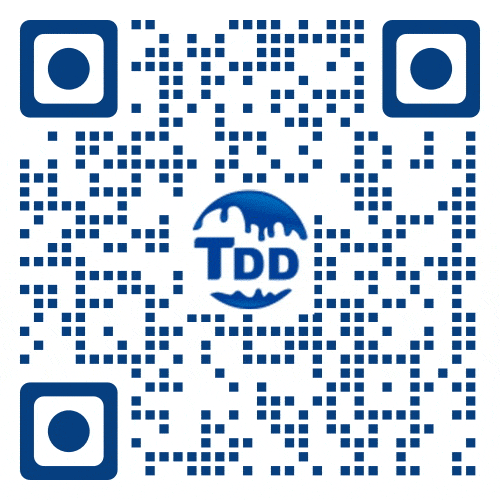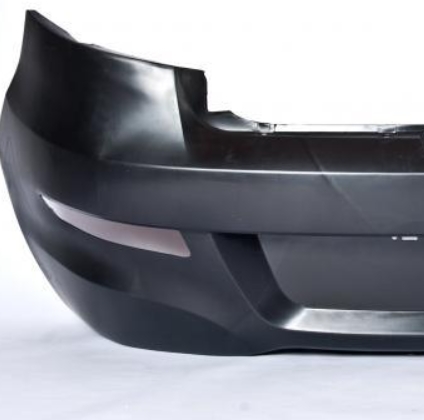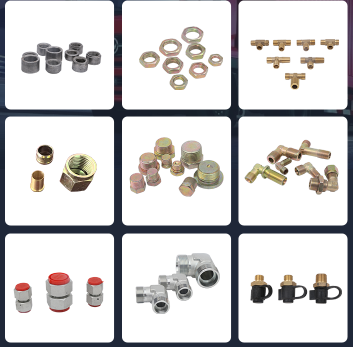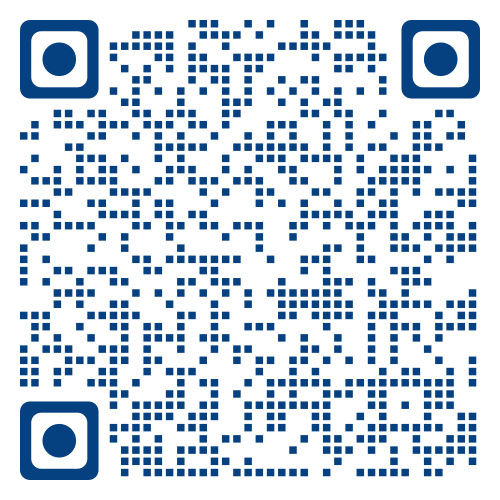Pigments are substances that give colors to objects. Pigments are divided into soluble and insoluble, inorganic and organic. Inorganic pigments are generally mineral substances. Humans have long known the use of inorganic pigments, using colored earth and ores, to paint on rock walls and smear their bodies. Organic pigments are generally derived from plants and marine animals, such as mozambique, garcinia and purple extracted from shellfish in ancient Rome. Introduction Pigment is a powdery substance used for coloring. It is insoluble in water, grease, resin, organic solvents and other media, but can be evenly dispersed in these media and can color the media, and has a certain hiding power. The basic requirements for pigments used in art are that the finer the particles, the better, the brighter the color, the better, and the longer it lasts without discoloration, the better (the stability is better). Watercolor paints Watercolor paints, except white, are almost all transparent. Only in this way can the needs of watercolor cover dyeing be met. Gouache paint was originally invented by adding white powder to watercolor paint to make the color opaque. Because watercolor paint is transparent, it is difficult to correct if you make a mistake. Gouache paint can be easily modified because it is opaque. Later, raw materials such as gum arabic were added to the gouache pigment to further improve its performance. Gum arabic can make the surface of gouache paint have a layer of luster after it dries. However, in special occasions where flat coating is required (such as rendering renderings and coloring animations), the glue will form irregular spots on the surface of the color, or make the color dull. It is uneven, so there are special degumming pigments. Oil paint is paint diluted with oil. Chinese painting pigments are very rich and come in various types, ranging from mineral powder to plant extraction to animal extraction, and the types are complex. Theoretically, as long as there are three primary colors of red, blue and yellow, all other colors can be mixed, but the purity of the mixed colors is always not high enough. Therefore, modern art paint manufacturers produce high-purity pigments for various hues and brightness colors. to meet various needs. From the most basic 12 colors to the usual 24 colors or even 48 colors to more than 60 colors. Special metallic colors are not included. use It is an indispensable raw material for the manufacture of paints, inks, oil painting pastes, cosmetic paints, colored papers, etc. It is also used for filling and coloring plastics, rubber products, and synthetic fiber solutions. Performance characteristics Pigments usually have the following properties: color. Color pigments are pigments that selectively absorb and scatter visible light energy and can present colors such as yellow, red, blue, and green under natural light conditions. Tinting power. The ability of a coloring pigment to absorb incident light. It can be expressed as a relative percentage equivalent to the tinting power of a standard pigment sample. Covering power. The ability of a film-forming substance to cover the surface color of a substrate. It is often expressed in grams of pigment contained in paint covering an area of 1 square meter. Lightfastness. The ability of pigments to maintain their original color under certain lighting conditions. Generally, an eight-level system is used, with level eight being the best. Weather resistance. The ability of pigments to maintain their original properties under certain natural or artificial climatic conditions. Generally, a five-level system is used, with level five being the best. Volatile. Mainly refers to moisture, which is generally not more than 1%. Oil absorption. Refers to the number of grams of refined linseed oil required to form a uniform mass of 100 grams of pigment. The one with the smallest oil absorption capacity is better. The oil absorption capacity is related to the specific surface area and structure of the pigment particles. water soluble matter. The water-soluble substances contained in the pigment are expressed as a mass percentage of the pigment. The water-soluble content of pigments used in paint making is often controlled below 1%. concept Pigment is a colored fine-grained powdery substance that is generally insoluble in water and can be dispersed in various media such as oils, solvents, and resins. It has hiding power, tinting power, and is relatively stable to light. It is often used in the preparation of coatings, inks, and colored plastics and rubber, so it can also be called a colorant. Pigments differ from dyes in that dyes are generally soluble in water (an old distinction), while pigments are generally insoluble in water. Dyes are mainly used for dyeing textiles and other materials. However, this distinction is not very clear, because some dyes may also be insoluble in water, and pigments are also used in pigment printing and pulp coloring of textiles. The chemical structure of organic pigments is similar to that of organic dyes, so they are usually regarded as a branch of dyes. Performance characteristics Pigments usually have the following properties: color . Color pigments are pigments that selectively absorb and scatter visible light energy and can present colors such as yellow, red, blue, and green under natural light conditions. Tinting power . The ability of a coloring pigment to absorb incident light. It can be expressed as a relative percentage equivalent to the tinting power of a standard pigment sample. Covering power . The ability of a film-forming substance to cover the surface color of a substrate. It is often expressed in grams of pigment contained in paint covering an area of 1 square meter. Lightfastness . The ability of pigments to maintain their original color under certain lighting conditions. Generally, an eight-level system is used, with level eight being the best. Weather resistance . The ability of pigments to maintain their original properties under certain natural or artificial climatic conditions. Generally, a five-level system is used, with level five being the best. Volatile . Mainly refers to moisture, which is generally not more than 1%. Oil absorption . Refers to the number of grams of refined linseed oil required to form a uniform mass of 100 grams of pigment. The one with the smallest oil absorption capacity is better. The oil absorption capacity is related to the specific surface area and structure of the pigment particles. water soluble matter . The water-soluble substances contained in the pigment are expressed as a mass percentage of the pigment. The water-soluble content of pigments used in paint making is often controlled below 1%. Basic classification Pigments can be divided into two categories based on their chemical composition: inorganic pigments and organic pigments. Based on their sources, they can be further divided into natural pigments and synthetic pigments. Natural pigments are derived from minerals, such as cinnabar, laterite, realgar, malachite green and heavy calcium carbonate, wollastonite, barite powder, talc powder, mica powder, kaolin, etc. Those from biological sources, such as those from animals: cochineal red, natural fish scale powder, etc.; those from plants include: garcinia, alizarin red, indigo, etc. Synthetic pigments are artificially synthesized, such as inorganic pigments such as titanium white, zinc barium white, lead chromium yellow, and iron blue, as well as organic pigments such as red pink, even light yellow, phthalocyanine blue, and quinacridone. Pigments are classified according to their function, such as anti-rust pigments, magnetic pigments, luminescent pigments, pearlescent pigments, conductive pigments, etc. Classification by color is a convenient and easy-to-use method. Thus pigments can be classified as white, yellow, red, blue, green, brown, purple, black, regardless of their origin or chemical composition. The famous “Dye Index” (ColorIndex) uses a color classification method: for example, pigments are divided into pigment yellow (PY), pigment orange (PO), pigment red (PR), pigment violet (PV), and pigment blue (PB). , Pigment green (PG), Pigment brown (PBr), Pigment black (PBk), Pigment white (PW), Metallic pigment (PM) and other ten categories. Pigments of the same color are arranged according to the sequence number. For example, titanium white is PW- 6. Zinc-barium white PW-5, lead chromium yellow PY-34, quinacridone PR-207, iron oxide red PR-101, phthalocyanine blue PB-15, etc. In order to find the chemical composition, there are other structural numbers, such as titanium white PW-6C.I.77891 and phthalocyanine blue PB-15C.I.74160, which allow manufacturers and users of pigments to identify the listed pigments. The composition and chemical structure of. Therefore, it has been widely used in the international pigment import and export trade industry, and some domestic pigment manufacturers also use this international classification standard for pigments. China’s national standard for pigments, GB/T3182-1995, also uses color classification. Each pigment color has a symbol, such as white for BA, red for HO, yellow for HU… Then combined with the code and serial number of the chemical structure, the pigment model is formed, such as rutile titanium white BA-01-03, medium chrome yellow HU-02-02, iron oxide red HO-01-01, zinc barium white BA-11-01, toluidine red HO-02-01, BGS phthalocyanine blue LA-61-02, etc. Pigments can be classified according to the types of compounds they contain: Inorganic pigments can be subdivided into oxides, chromates, sulfates, silicates, borates, molybdates, phosphates, vanadates, ferricyanates , hydroxides, sulfides, metals, etc.; organic pigments can be divided into azo pigments, phthalocyanine pigments, anthraquinones, indigo, quinacridone, dioxazine and other polycyclic pigments, arylmethane according to the chemical structure of the compound Department of pigments, etc. From the perspective of production and manufacturing, they can be classified into titanium pigments, iron pigments, chromium pigments, lead pigments, zinc pigments, metallic pigments, and organic synthetic pigments. This classification method has practical significance, and often one system can Represents a professional pigment production industry. From the perspective of application, it can be divided into paint pigments, ink pigments, plastic pigments, rubber pigments, ceramic and enamel pigments, pharmaceutical and cosmetic pigments, art pigments, etc. Various specialty pigments have some unique properties to match the requirements of the application. Pigment manufacturers can also recommend a series of pigment products to professional users in a targeted manner. acrylic paint Acrylic paint is a synthetic polymer pigment invented in the 1950s. It is made of pigment powder mixed with acrylic latex. Acrylic latex is also called acrylic resin polymerized latex. There are many kinds of acrylic resins, such as methacrylic resins, etc. Therefore, there are also many kinds of acrylic paints. Foreign pigment manufacturers have produced a series of acrylic products, such as matte acrylic pigments, semi-matte acrylic pigments, glossy acrylic pigments, acrylic matte oils, glazing oils, plastic ointments, etc. Acrylic paints are very popular among painters. Compared with oil paints, it has the following characteristics: 1. It can be released with water to facilitate cleaning. 2. Quick drying. The paint dries within minutes after being put down, unlike oil paintings that have to wait several months to be polished. Painters who prefer slow-drying paints can use retarder to delay the drying time of the paint. 3. The coloring layer quickly loses solubility as it dries, forming a tough, elastic, water-impermeable film. This membrane is similar to rubber. 4. The color is full, thick, and fresh, and it never feels “dirty” or “grey” no matter how you blend it. The colored layer will never absorb oil and cause stains. 5. The longevity of the piece is longer. The oil film in oil paintings is prone to oxidation over time, turning yellow and hardening, which can easily lead to cracks in the painting. Theoretically speaking, acrylic film will never become brittle or yellow. 6. The biggest difference between acrylic paint and oil painting in the way it is used is that it has the operating characteristics of general water-based paints and can be used as both watercolor and gouache. 7. Acrylic modeling ointment contains granular types, and there are coarse particles and fine particles, which provides convenience for making textures. 8. Acrylic paint is not very harmful to the human body. Just be careful not to accidentally eat it. 9. Acrylic paint can be used to design your own cultural shirts, which can highlight your personal personality. But it’s best to use cotton clothes and be white. It should be noted that acrylic painting should be painted on a base made of acrylic primer (GESSO), not an oil base. Material experts also do not advocate the mixing of acrylic and oil paints, especially not to paint oil paintings on an acrylic base. This is mainly for the permanent preservation of the work. There is no adverse reaction between acrylic and oil paints. When used alternately, their adhesion needs to be tested over time. water based pigments Water-based pigment is a new type of environmentally friendly pigment. Compared with traditional pigments, it has the advantages of non-toxic and odorless. Compared with traditional pigments, it is more in line with the concept of health and environmental protection, and has become a trend in pigments. Oil paints Oil paint is a special paint for oil paintings, which is made by mixing and grinding pigment powder with oil and glue. Most of them are sold in the market in tubes, but you can also make your own. Oil paint is a material entity formed by mixing and grinding mineral, plant, animal, chemically synthesized toner and the blending agent linseed oil or walnut oil. Its characteristic is that it can be dyed to other materials or attached to certain materials to form a certain pigment layer. This pigment layer has a certain degree of plasticity. It can form various shapes and marks that the painter wants to achieve according to the use of tools. texture. The various hues of oil paints are determined by the hue of the toner. Oil can make the hue of the toner slightly darker and more saturated. Chinese painting pigments Chinese painting pigments, also called Chinese painting pigments, are special pigments used to paint Chinese paintings. They are generally sold in tubes and paint blocks, but also in pigment powder. Classification of Chinese Painting Pigments Traditional Chinese painting pigments are generally divided into two categories: mineral pigments and plant pigments. Historically speaking, minerals should be used first, followed by plants […]















